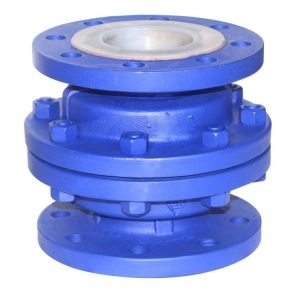Comparing Swing and Lift Check Valves: Functional Differences Explained

Understanding Swing Check Valves and Lift Check Valves
Swing Check Valve Design and Mechanism
Swing check valves are one-way valves. They allow fluid to flow in a single direction. This prevents backflow. These valves open with fluid movement and pressure. They close to stop reverse flow to equipment like pumps or compressors. The valve features a disc or flapper. It swings on a hinge or trunnion. When fluid moves forward, the disc opens. This allows smooth passage. If the flow stops or reverses, the disc returns to its seat. Gravity or backpressure causes this. It seals off reverse flow.
This simple design makes swing check valves efficient. They work well with low-pressure drops. Yet, they can face issues. Water hammering and slamming are common problems. These occur when the disc shuts quickly. Sudden changes in flow speed cause this. It creates noise and may harm the valve or pipes.
Lift Check Valve Structure and Operation
Lift check valves work differently. They use a piston or ball. It moves up and down inside the valve. When fluid flows correctly, the piston lifts off its seat. If the flow stops or reverses, gravity or backpressure pushes the piston back. This forms a seal.
Lift check valves are more compact than swing check valves. This makes them ideal for high-pressure systems. They provide precise sealing. They work best with clean fluids. Debris can disrupt the piston’s smooth movement.
Performance Comparison: Swing Check Valve vs. Lift Check Valve
Fluid Dynamics and Pressure Drop
Swing check valves differ from lift check valves in fluid dynamics. They cause less resistance to flow. Their streamlined design suits systems needing minimal pressure loss.
Lift check valves create higher pressure drops. Their internal parts block part of the flow path. This makes them less ideal for high-flow systems. However, they excel in high-pressure settings. They offer strong sealing.
Durability and Maintenance Requirements
Durability matters when comparing these valves. Swing check valves have fewer moving parts. This reduces wear over time. But they may need more upkeep in systems with water hammering or slamming.
Lift check valves are durable in stable conditions. Yet, their complex parts make maintenance harder. Keeping the piston aligned and clean is crucial for long-term use.
Applications and Limitations of Swing Check Valves
Ideal Use Cases for Swing Check Valves
Swing check valves are versatile. They suit low-pressure systems. They maintain low resistance. You’ll find them in water distribution, wastewater plants, and HVAC systems.
They’re also used in pump discharge lines. They prevent reverse flow that could damage equipment. Their ability to handle large fluid volumes with little energy loss makes them a great choice.
When to Avoid Swing Check Valves
Swing check valves aren’t perfect for every system. Avoid them in systems with rapid flow changes. They’re prone to water hammering and slamming. These issues can cause early wear or failure.
They also struggle in high-pressure settings. Precise sealing is vital there. Lift check valves or nonslam axial check valves may perform better.
By grasping the differences between swing and lift check valves—their designs, mechanisms, performance, uses, and limits—engineers can choose the right valve for their needs.
Choosing Between Swing and Lift Check Valves
Key Factors for Selection
Choosing between swing and lift check valves requires understanding system needs. Swing check valves suit systems prioritizing low-pressure drops. Their design allows fluid to flow with little resistance. They’re great for water distribution or pump discharge lines. These valves open with fluid movement and pressure. They close to block backflow to equipment like pumps or compressors.
Lift check valves are better for high-pressure systems. They ensure precise sealing. Their piston mechanism provides robust sealing in tough conditions. But they cause higher pressure drops. This can be an issue for systems needing high flow.
Fluid type also matters. Swing check valves handle fluids with debris well. Their open design is less restrictive. Lift check valves work better with clean fluids. Debris can block the piston.
Expert Recommendations for Swing Check Valves
Experts suggest swing check valves for systems with large fluid volumes and low energy loss. Think water treatment, HVAC, or irrigation systems. Their simple design cuts maintenance costs.
But water hammering and slamming are concerns. To reduce these, experts recommend dampening devices or valves designed to minimize these effects.
Miwival’s High-Quality Check Valve Solutions

Features of Miwival’s Swing and Lift Check Valves Durability, Reliability, and Performance
Miwival’s products are built to last. They’re reliable in tough industrial settings. Strong materials ensure a long service life. These valves allow one-way fluid flow. This boosts system performance by preventing backflow.
Miwival has swing check valves that use advanced hinge designs. These reduce wear by lowering friction. Their lift check valves feature precise pistons. These ensure consistent sealing in high-pressure systems.
Customization Options for Specific Needs
Every system is unique. Miwival offers many customization options. Customers can pick materials like stainless steel or PTFE-lined parts for chemical compatibility. They can also choose valve sizes, pressure ratings, and connections to match system needs.
These options make Miwival’s valves versatile. They suit industries like chemical processing and power generation.
Why Choose Miwival for Your Valve Requirements?
Trusted by Professionals Across Industries
Miwival is a trusted name in valve solutions. Professionals in many fields rely on them. Our focus on innovation ensures high performance. Our products meet modern engineering challenges.
By picking Miwival’s swing or lift check valves, you get reliable operation. Expert technical support backs our products. Whether it’s stopping reverse flow in a water supply or ensuring precise sealing, Miwival delivers. Our focus on durability, performance, and custom solutions makes us a top choice. Contact Miwival if have needs for valves.
FAQ
Q: What is the main function of swing and lift check valves?
A: Both swing and lift check valves are one-way valves designed to allow fluid to flow in a single direction while preventing backflow. They protect upstream equipment, such as pumps and compressors, from reverse flow damage.
Q: How does a swing check valve work?
A: A swing check valve has a disc or flapper that swings on a hinge. When fluid flows in the correct direction, the disc opens, allowing passage. If the flow stops or reverses, the disc swings back to its seat, sealing off reverse flow due to gravity or backpressure.
Q: How does a lift check valve operate?
A: A lift check valve uses a piston or ball that moves vertically. Forward fluid flow lifts the piston off its seat. When the flow reverses or stops, gravity or backpressure pushes the piston back onto its seat, creating a seal.





